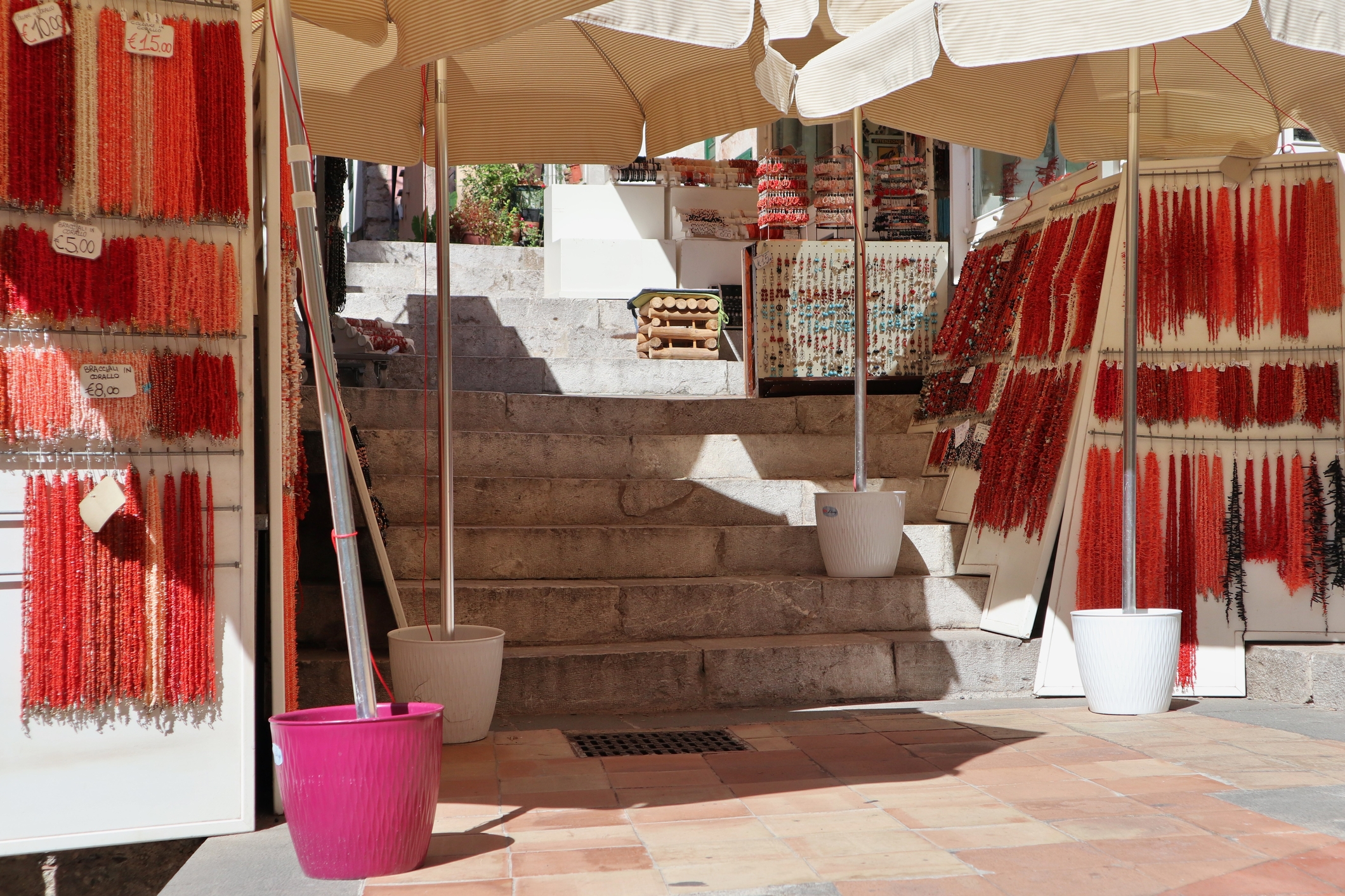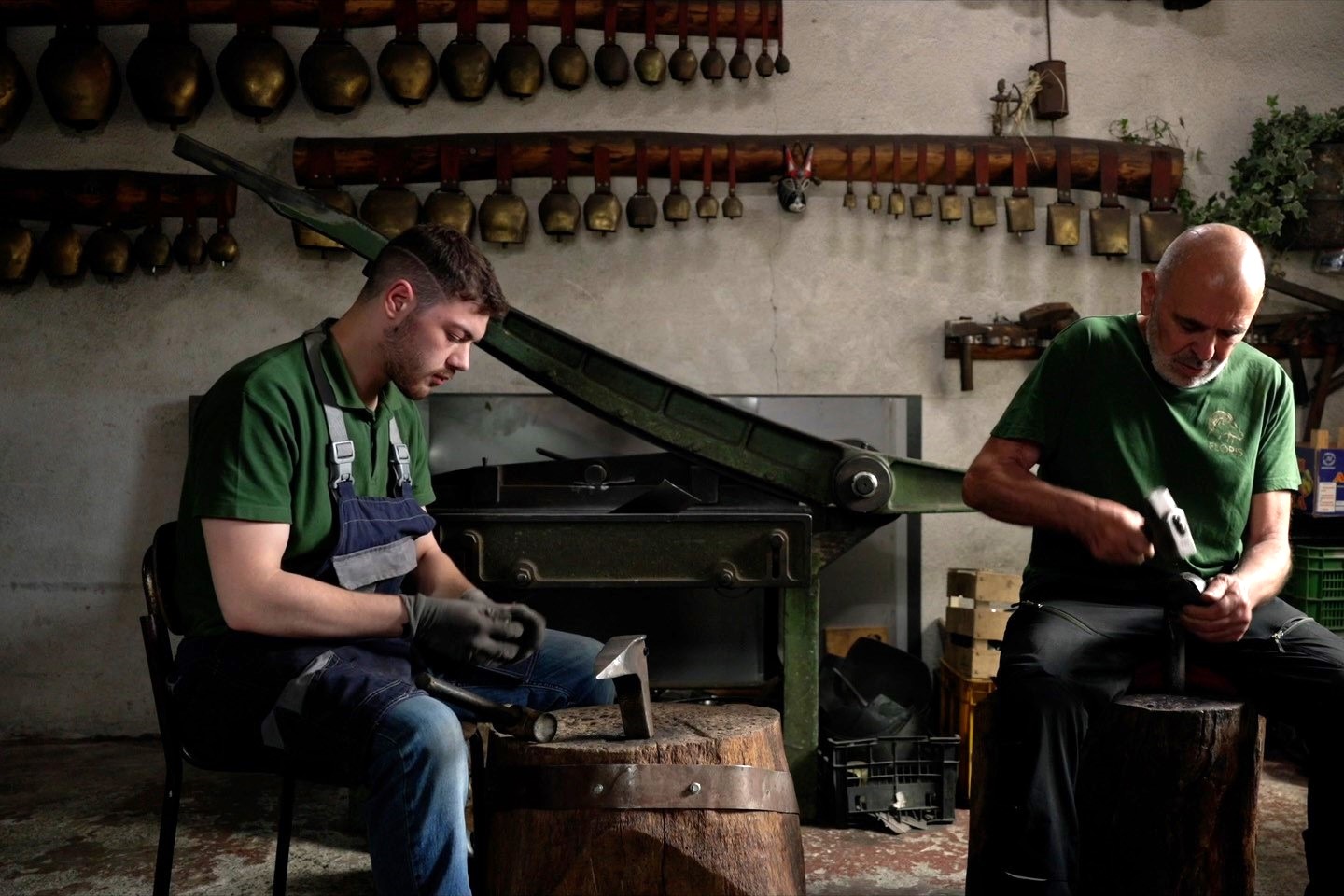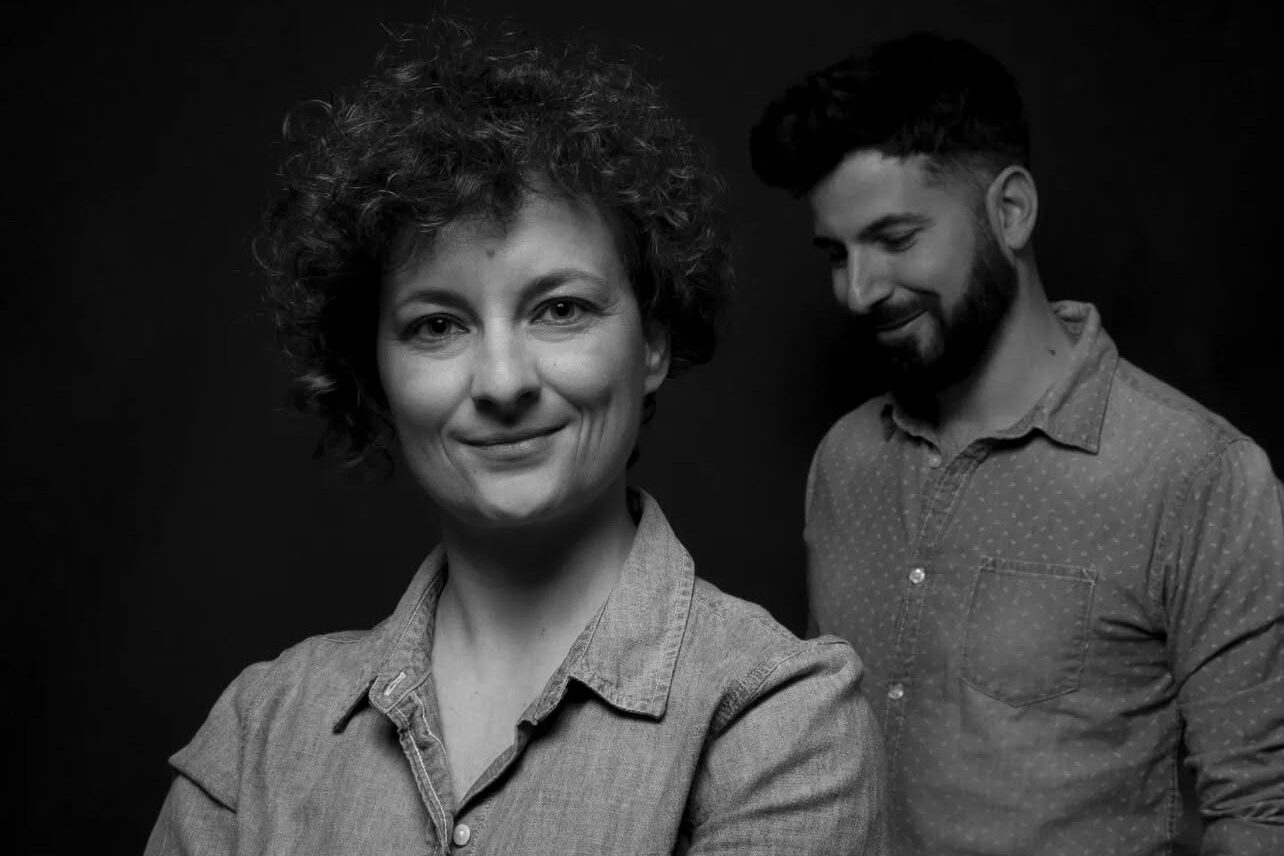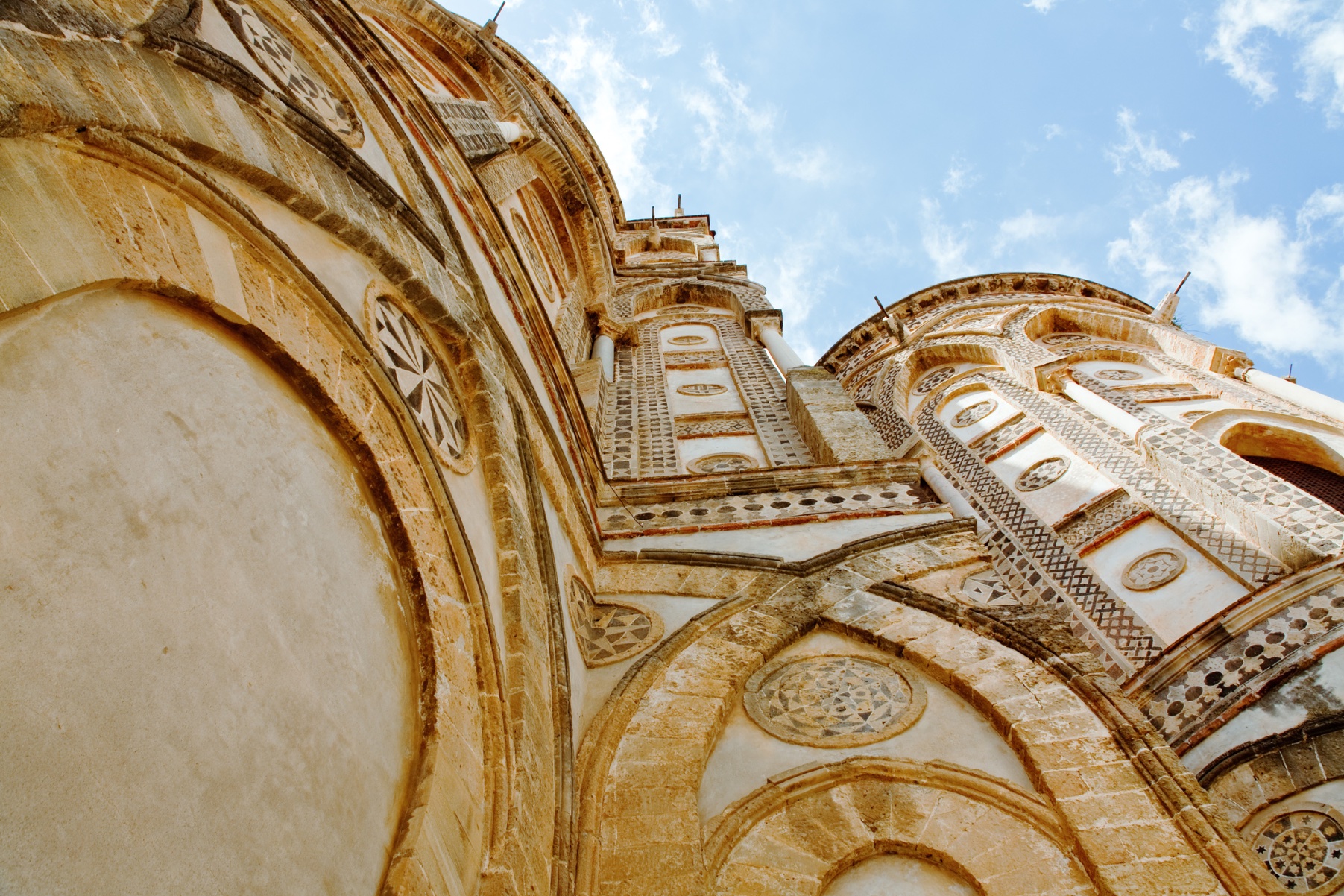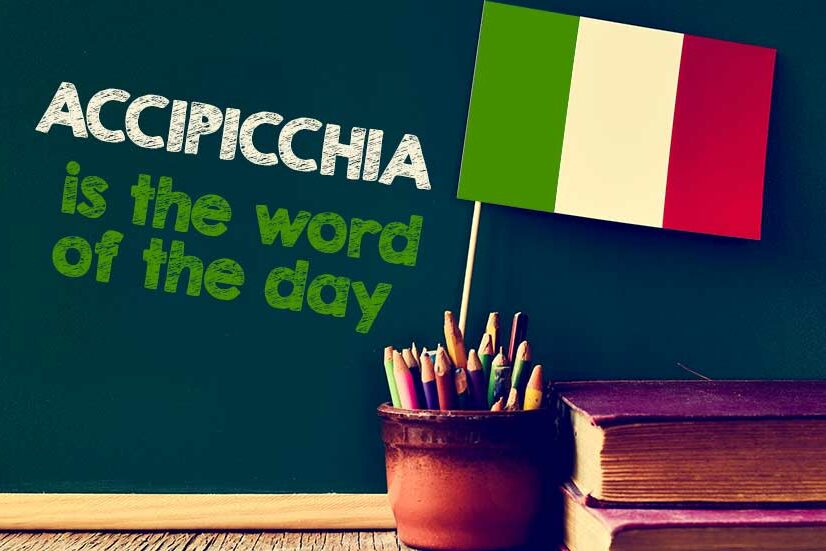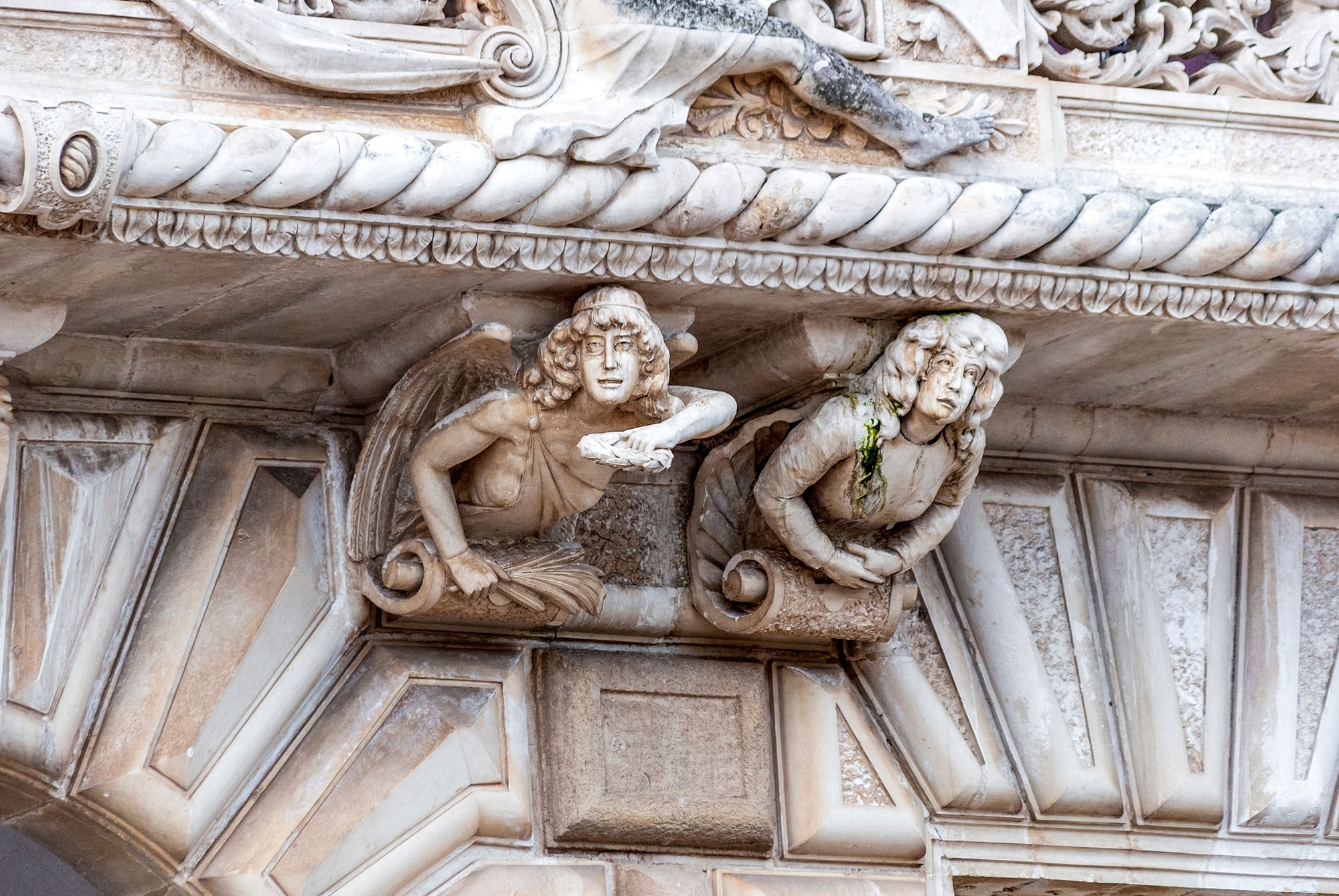There is a story behind the Sicilian city of Trapani, well known for keeping its old features of a fishing village but able to become, over time, the most important and strategic port in the island.
Indeed, legend tells about Demeter, the goddess of harvests, who – while looking for her lost daughter – in a moment of despair, dropped her sickle: as it fell to earth and landed close to the sea, a city grew from it, in the shape of the Goddess’ scythe.
The Trapanesi craftsmen have refined their skills until they could produce objects of great value
Along with beautiful beaches and a gorgeous landscape, Trapani has a treasure that is not immediately visible. It’s the red world under the Mediterranean sea, made of corals discovered, originally, by ancient Romans. It was not until the 12th century, however, that the existence of coral was documented; an Arab traveler, Idrisi, noted the fine quality of the raw material and took it back to his homeland.
Several centuries later, around 1416, the first coral reef was located and began to attract travellers, especially from the North African Maghreb.
Sicilian fishermen began to fish the corals, which became the mainstay of the local economy, and Trapanesi craftsmen soon became renowned for their ability to create beautiful jewelry and ornaments out of the raw material.
People have always attributed magical powers to red corals
Between 1530 and 1535, new red reefs were found and the art of crafting corals spread throughout the area: from simple spheres and small items, these artists gradually refined their skills until they could produce objects of great value. Cleaning and removing the orange patina and working the grindstone until it breaks into small pieces required very special techniques: small sculptures or cameos proved the carvers’ skill in working with large pieces of coral.
More often, these items were commissioned by influential people, as was the case of the dispersed Mountain Coral, sent, in 1570, to King Philip II of Spain by the Viceroy of Sicily, as well as the figure of the Madonna of Trapani, donated to Vittorio Amedeo of Savoy during his coronation in Palermo in 1713.
Aside from the beauty of these special objects, people always attributed magical powers to red corals: not only were they considered the petrified blood of the mythological Medusa, but they were also given as good luck charms and as talismans to ward off misfortune and disaster.
By the 18th century, the skill and artistry of the carvers had grown to the point that orders for their coral jewelry and ornaments came from all over the world. The production was so profitable that 25 workshops of artisans opened in the so-called Via dei Coralli, later known as “Via degli Scultori” and finally as “Via Torrearsa”. The cribs of Trapani, unique in the world, are still the most extraordinary examples of the level of artistry attained by the coral craftsmen.
The 18th century was the moment when the demand for coral jewelry reached its peak: requested by kings, princes, cardinals and popes, red corals became part of Doria’s collections, as well as the ones by Counts of Schoenborn in Pommersfelden, the Princes of Ligne, King of Spain and the Whitaker.
Following the time of splendor, in the 19th century, coral became rare, due also to the new techniques used to set them: the oldest method consisted of setting small elements from the coral with a special glue made of pitch, wax and cloth, then covered with another copper plate. The surface of the objects was entirely filled with corals. At the end of the 17th century, this technique changed to seaming the raw material through wires and small pins, a simpler but also less secure method of attaching the coral.
With the decrease of the raw material in the Mediterranean Sea and the decline of craftsmanship in the 19th century, the art itself was affected. Efforts have been made to renew the interest, like in 1986, when an international exhibition about the art of coral in Sicily was held at the Museum Pepoli.
Since then, the enthusiasm around the activity has grown again among young masters and many shops have re-opened, turning Trapani into a new, modern città dei coralli.
